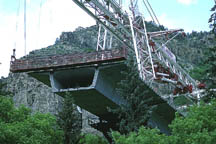STRUCTURAL ENGINEERING
Kavanagh Lecture - Abstract
April 5, 2007
Risk Issues in the Built Environment
by
Ross B. Corotis
Denver Business Challenge Professor of Engineering
University of Colorado at Boulder
ABSTRACT
At the very core of the welfare of society lies the creation of a secure and effective environment for living, working and cultural interaction. Yet both the built and natural components of this environment contain risk. Although decisions regarding acceptable risk levels belong to society at-large, analysis of risks related to human-made infrastructure have typically been in the domain of the civil engineer. The existence of a disconnect between the technical analysis of the issues and the factors that drive societal decisions must be addressed. Thus it is necessary for multidisciplinary research to establish technological/social risk methods and models to effectively address risk issues in the built environment.
The design and stewardship of public infrastructure fall under the purview of the community paying for and benefiting from that infrastructure, and hence they are a social responsibility. As such, decisions regarding trade-offs of risk and cost, among other characteristics, need to be decided by the public as a whole, their elected or appointed officials, or professionals entrusted with the responsibility and trust of the community. Some of the economic issues associated with these decisions are addressed here.
It will be important to analyze and characterize the risks associated with the built environment, as well as public perception of these risks. Through careful examination of both 1) engineering decisions related to risk in the built environment, and 2) public perception of risk with a focus on the built environment, one can develop a conceptual representation of decision-making that more adequately incorporates risk within the built environment as perceived by a variety of stakeholders. This more holistic decision-making approach should then be used as a framework to examine past engineering decisions to determine shortfalls in the incorporation of risk perception in these past processes. Informed recommendations can then be made for procedural adjustments allowing for more realistic incorporation of both engineering and public-perceived risk within decisions regarding the built environment.
The concepts of probability, utility and discounting have been the working tools to translate concepts of risk, return, and investment into quantities amenable to formulation and optimization. Yet there is no question that society at-large does not explicitly confront trade-offs as related to these issues within the context of the built environment. For instance, there has been very limited success in convincing communities to integrate natural hazards issues into their planning and development plans. Research implies several underlying reasons for this, including: 1) The public generally has trouble extrapolating from experienced scenarios to ones of vastly different conditions; 2) The public is generally reluctant to divert funding from immediate and definite returns into uncertain possibilities sometime in the future; 3) Discounting historic preservation, morbidity and mortality is unclear since their present net worth is generally not considered less than it will be in the future. This is also true for intergenerational costs and benefits; 4) Political accountability focuses on immediate, demonstrable effects, not statistical future; 5) The allocation of resources is strongly dependent on the multidimensional aspects of perceived risk, rather than simply probability; and 6) The realities of uncertainties in our built environment have not been successfully communicated by engineering professionals to lay persons and policymakers.
While many aspects of these issues have been in the realm of social scientists, and with good reason, the fact remains that the challenges are also centered on the performance of structures and infrastructure that comprise our built environment, which lies at the heart of structural system engineering. Accordingly, the time has come for a deeper undertanding and collaboration between the structural engineering profession and the behavioral and social science discipline in assuming a broader perspective and responsibility for communicating the performance and limitations of the built environment to the public at large, as well as taking a central role in discussions of societal choices and trade-offs.
Because all such infrastructure has a cost life-cycle, an economic lifetime and a physical design life, costs and benefits occur over an extended period of time. Therefore, management policies must be based on a time-adjusted procedure for decision-making. The most common of these are the use of present discounted value, equivalent annual cost, future inflated value, and internal or adjusted rate of return. All of these methods depend on the value of the discount rate, and for the long lifetimes associated with the built environment the value of the discount rate has a profound effect on the determination of the optimal design (Gransberg and Molenaar, 2004). This is especially important for infrastructure, for which there are risks of very low annual probability of occurrence and high consequence, such as collapse due to flooding, earthquake, storm and terrorism. In addition, the burden of paying for public infrastructure and the accrual of benefits occur over an extended period, during which time different individuals or even segments of society may be differentially involved. All of these factors warrant an in-depth review of the usual economic assumptions and tools of management used in the private sector.

